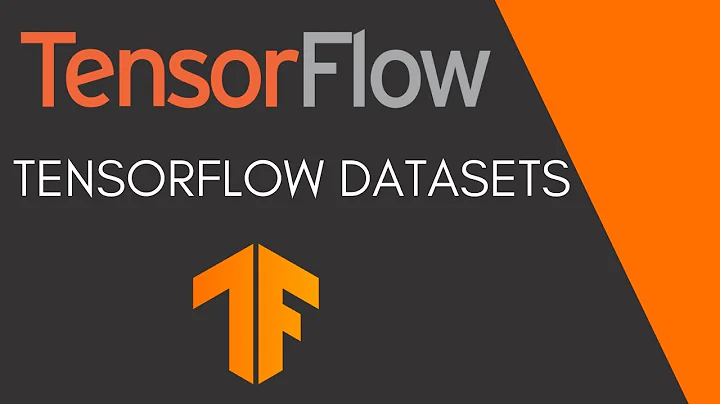How do I create padded batches in Tensorflow for tf.train.SequenceExample data using the DataSet API?
Solution 1
You need to pass a tuple of shapes. In your case you should pass
dataset = dataset.padded_batch(4, padded_shapes=([vectorSize],[None]))
or try
dataset = dataset.padded_batch(4, padded_shapes=([None],[None]))
Check this code for more details. I had to debug this method to figure out why it wasn't working for me.
Solution 2
If your current Dataset object contains a tuple, you can also to specify the shape of each padded element.
For example, I have a (same_sized_images, Labels) dataset and each label has different length but same rank.
def process_label(resized_img, label):
# Perfrom some tensor transformations
# ......
return resized_img, label
dataset = dataset.map(process_label)
dataset = dataset.padded_batch(batch_size,
padded_shapes=([None, None, 3],
[None, None])) # my label has rank 2
Solution 3
You may need to get help from the dataset output shapes:
padded_shapes = dataset.output_shapes
Related videos on Youtube
Marijn Huijbregts
Updated on June 08, 2022Comments
-
 Marijn Huijbregts almost 2 years
Marijn Huijbregts almost 2 yearsFor training an LSTM model in Tensorflow, I have structured my data into a tf.train.SequenceExample format and stored it into a TFRecord file. I would now like to use the new DataSet API to generate padded batches for training. In the documentation there is an example for using padded_batch, but for my data I can't figure out what the value of padded_shapes should be.
For reading the TFrecord file into the batches I have written the following Python code:
import math import tensorflow as tf import numpy as np import struct import sys import array if(len(sys.argv) != 2): print "Usage: createbatches.py [RFRecord file]" sys.exit(0) vectorSize = 40 inFile = sys.argv[1] def parse_function_dataset(example_proto): sequence_features = { 'inputs': tf.FixedLenSequenceFeature(shape=[vectorSize], dtype=tf.float32), 'labels': tf.FixedLenSequenceFeature(shape=[], dtype=tf.int64)} _, sequence = tf.parse_single_sequence_example(example_proto, sequence_features=sequence_features) length = tf.shape(sequence['inputs'])[0] return sequence['inputs'], sequence['labels'] sess = tf.InteractiveSession() filenames = tf.placeholder(tf.string, shape=[None]) dataset = tf.contrib.data.TFRecordDataset(filenames) dataset = dataset.map(parse_function_dataset) # dataset = dataset.batch(1) dataset = dataset.padded_batch(4, padded_shapes=[None]) iterator = dataset.make_initializable_iterator() batch = iterator.get_next() # Initialize `iterator` with training data. training_filenames = [inFile] sess.run(iterator.initializer, feed_dict={filenames: training_filenames}) print(sess.run(batch))The code works well if I use
dataset = dataset.batch(1)(no padding needed in that case), but when I use thepadded_batchvariant, I get the following error:TypeError: If shallow structure is a sequence, input must also be a sequence. Input has type: .
Can you help me figuring out what I should pass for the padded_shapes parameter?
(I know there is lots of example code using threading and queues for this, but I'd rather use the new DataSet API for this project)
-
 Marijn Huijbregts over 6 yearsThanks! That makes a lot of sense. The following worked for my example:
Marijn Huijbregts over 6 yearsThanks! That makes a lot of sense. The following worked for my example:padded_shapes=([None,vectorSize],[None]). The first tensor is a list of vectors with dimension vectorSize and the second is a list with integer labels. -
Conchylicultor about 6 yearsJust as complement,
padded_shapesis sensitive to the type of the nested struct (if the dataset return a tuple, padded_shapes should be a tuple too and not a list) -
gary69 about 4 yearsWhy did you use 3 for third image dimension instead of None?



![How to load a custom dataset with tf.data [Tensorflow]](https://i.ytimg.com/vi/bqeUmLCgsVw/hq720.jpg?sqp=-oaymwEcCNAFEJQDSFXyq4qpAw4IARUAAIhCGAFwAcABBg==&rs=AOn4CLDGPkBFFPzTPg9BIymly2RuST_s1Q)


